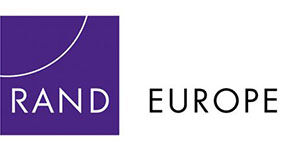This research aims to estimating the potential economic benefits of making people physically more active. Physical activity has the potential to improve workplace performance, better maintain general health and has also been proven to positively affect mental health. Using an econometric model, Dr Erez Yerushalmi is working with the Rand Corporation and funder Vitality to forecast the potential costs of physical activity on a national scale.
READ FINAL report here and from BCU Repository here.
Researchers
RAND Corporation: Marco Hafner
Birmingham City University (BCU): Erez Yerushalmi
Research background
Many strands of research suggest that physical activity increases brain activity, motivation and promotes better mental health. On a regional and national scale, these benefits have the potential to produce significant cost savings to our heal and support services, as well as making workplaces more productive and cost-efficient. To test this theory and potentially inform national policy with regard to fitness initiatives, Birmingham City University developed a macroeconomic model to estimate the potential costs and savings related to physical activity.
Research aims
We examined the potential economic implications of insufficient physical activity across a large number of countries, including high, middle and low-income countries.
The main research questions were:
- What are the economic costs associated with physical inactivity across a large set of countries?
- What is the contribution of excess mortality associated with insufficient physical activity?
- What is the contribution of insufficient physical activity to workplace productivity?
- What can public policy and private stakeholders do to improve physical activity levels?
This project was a collaborative project between RAND Corporation and Birmingham City University (BCU).
Research method
In order to assess the economic implications of changes in physical activity at the population level, we developed a multi-country, dynamic, computable general equilibrium (CGE) macroeconomic model.
CGE is a macroeconomic model, which simultaneously solves multiple equations that relate to production, household and government demand, within a country, and between countries through trade linkages. It quantifies the ripple effects that one part of the economy (i.e., labour health) will have on the overall economy. To the best of our knowledge, no other study has applied such a comprehensive macroeconomic model to assess the economic implications of insufficient physical activity.
Publications
Final Report: READ FINAL report here and from BCU Repository here.
Journal Publication: Hafner, Marco and Yerushalmi, Erez and Stepanek, Martin and Phillips, William and Pollard, Jack and Deshpande, Advait and Whitmore, Michael and Millard, Francois and Subel, Shaun and Van Stolk, Christian (2020) Estimating the global economic benefits of physically active populations over 30 years (2020 to 2050). British Journal of Sports Medicine. ISSN 0306-3674
Funder
This project is funded by Vitality Health. Read more here.


